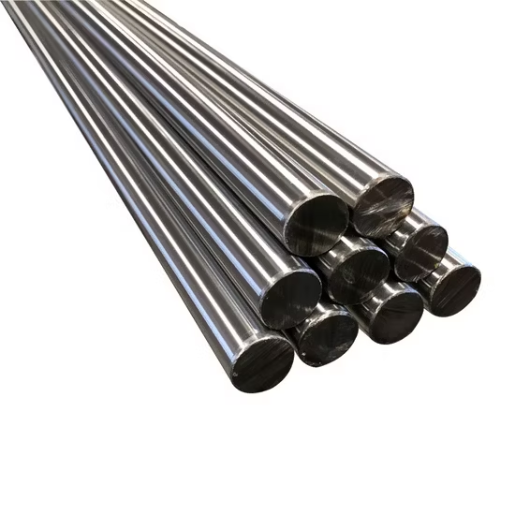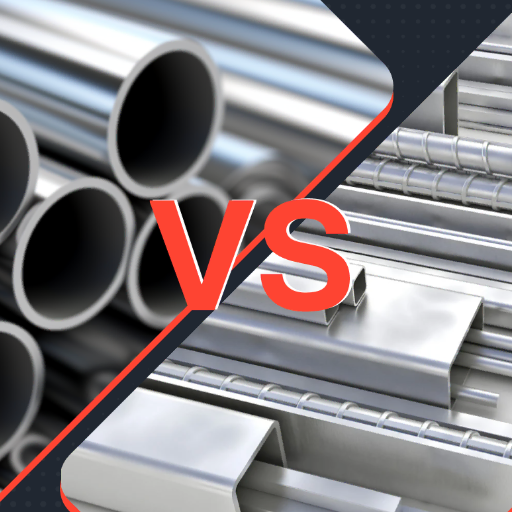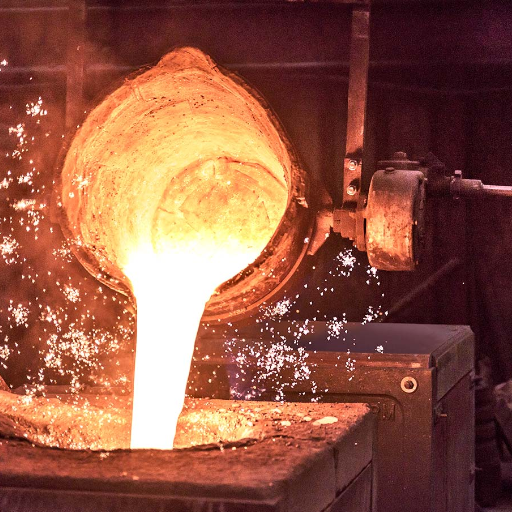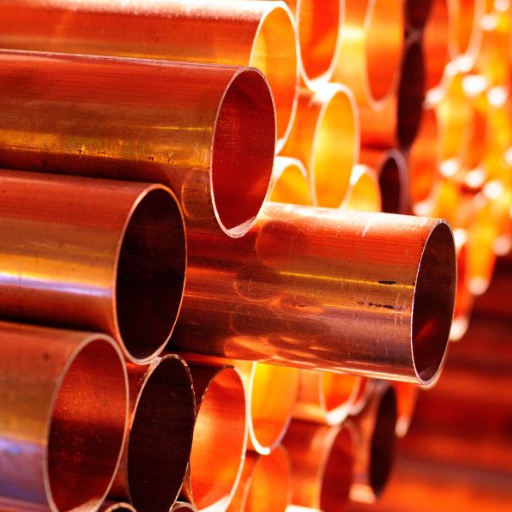Cold-finished round bars made out of stainless steel 316/316L are an outstanding material for many industries that require these products due to their unique features and properties. The purpose of this blog post is to present an all-encompassing research on these materials, including chemical constituents, major features, manufacturing steps, and practical uses. By understanding the distinctive characteristics of Stainless Steel 316/316L, readers will understand the reason why these materials are commonplace in the most strenuous conditions especially where there is a need for high corrosion resistance and strength characteristics. Furthermore, this article will detail the variation of grades 316 and 316L, so that the selection of materials for particular engineering and industrial applications is made easier. This guide will give engineers, designers, and industry experts a tour of the detailed and technical benefits and applications of the Stainless Steel 316/316L cold-finished round bars.
What are the Key Mechanical Properties of 316L Stainless Steel?

316L stainless steel has a combination of valuable mechanical properties that make it a material of choice in a multitude of challenging applications. Its tensile strength is between 485 MPa to 620 MPa and its yield strength is approximately 170 MPa, which depends on the specific processing and heat treatment conditions. It is broken around 40% which showcases great ductility. 316L stainless steel holds superb toughness, even cryogenically. The material also has a typical Brinell hardness of around 217 HBW, which guarantees wear and deformation resistance to sufficient levels. The combination of these mechanical properties is further enhanced with high corrosion resistance which makes the 316L stainless steel ideal for critical applications where strength and durability are required.
How does 316L compare to other grades of stainless steel?
316L is much better compared to other grades of stainless steel due to its increased ability to resist corrosion and chemical attack, especially in chloride-rich environments. 316L is different from 304 stainless steel in that it contains molybdenum which increases its ability to resist pitting and crevice corrosion. 316L is also more resistant to sensitization because of its lower carbon content compared to 316, making it more friendly to welding applications. While stainless steel duplexes have higher strength, they often lack the outstanding corrosion resistance and weldability that 316L offers. In addition, 316L, when compared to ferritic grades has far better formability and toughness at low temperatures. Therefore, 316L is ideal for some applications that require a combination of moderate strength, high corrosion resistance, and low-temperature toughness.
What is the tensile strength of 316L stainless steel?
Depending on the material treatment and condition, the tensile strength of 316L stainless steel typically ranges from 485 MPa (70,000 psi) to 620 MPa (90,000 psi). This value corresponds with the maximum stress that the 316L can endure before breaking while being pulled or stretched. Its combination of high tensile strength and qualitatively good corrosion resistance makes 316L ideal for use in chemical processing, marine environments, and any other extreme condition industries.
How does corrosion resistance factor into the mechanical properties?
The corrosion resistance of 316L stainless steel is crucial for its mechanical interoperability and durability. A favorable corrosion resistance guarantees retention of the tensile strength, ductility, and toughness of the material even when it is subjected to acidic, saline, or high-temperature conditions for long periods. This significantly reduces the chances of pitting, crevice corrosion, and mechanically induced stress corrosion cracking, which can hugely compromise the structural integrity of the material. The oxide passivation layer of 316L provides stability, which inhibits surface degradation, thus allowing for efficient function in chemical, marine, and medical domains without drastic changes to the mechanical properties. Therefore, the ability of 316L to resist corrosion is tied to its ability to perform reliably under challenging operational conditions.
Why Choose 316 Stainless Steel Round Bars?

316 stainless steel round bars are highly regarded for their exceptional combination of corrosion resistance, mechanical strength, and versatility across various applications. The primary advantage lies in their outstanding resistance to corrosive environments, bolstered by the molybdenum content that enhances protection against pitting and crevice corrosion, particularly in marine or chloride-rich settings. Additionally, these bars maintain superior tensile strength and ductility even under high temperatures, ensuring reliability and longevity. Their non-magnetic properties and excellent weldability further contribute to seamless integration in aerospace, medical, chemical, and industrial applications. This makes 316 stainless steel round bars a durable and cost-effective solution for demanding environments requiring both structural integrity and corrosion resilience.
What makes 316 stainless steel a preferred choice for marine-grade applications?
316 stainless steel is well known in marine applications because of its ability to resist corrosion, especially in seawater. Molybdenum is added to the alloy to increase its resistance to pitting and crevice corrosion. This grade also possesses outstanding mechanical properties such as durability and high tensile strength, even after long exposure to extremely harsh marine environments. Moreover, 316 stainless steel has excellent stress corrosion cracking resistance, providing long-term service in varying environmental conditions. In addition, its low maintenance needs and great weldability make it a highly effective and reliable material for marine-grade constructions, achieving structural integrity while saving on costs.
How do round bars differ from flat bars in use?
Round bars and flat bars differ in their shapes and structures, and round bars serve different purposes than flat bars in many applications. Innovation and creativity are vital in the design, and construction of modern round bars making them excellently suitable for rotational and dynamic purposes such as machinery parts and marine hardware. They excel in applications like shafts, and axles owing to their high resistance to torsion. With a rounded appearance, the geometry of these components also enables smooth rotations, allowing them to be a perfect fit in cylinders. Flat bars are often used in frameworks, as supports, or in braces since their rectangular design offers a greater surface area which helps in static or load-bearing positions. In addition, flat bars are comparatively easier to cut, machine, and weld making them ideal for custom components. Integrally, both types of components have different structural and mechanical purposes, and requirements that aid in achieving efficiency and performance in their specific fields.
What are the benefits of using cold-drawn round bars?
Cold-drawn round bars possess better dimensional accuracy and surface features than their hot-rolled counterparts. The manufacturing technique improves the mechanical properties, which include hardness and tensile strength, by grain structure refinement through deformation. These round bars are highly accurate, and confirm consistent diameter tolerances, making them ideal for stringent fit and low machining processes. Moreover, the cold drawing process improves material health, decreasing defects such as inclusions and porosity, thereby increasing durability and fatigue resistance. Because of these advantages, cold-drawn round bars are a favorite in the automotive, aerospace, construction, and manufacturing industries, which greatly value dependability and high-level performance.
How is a Cold Finish Applied to Stainless Steel 316 Round Bars?

The cold finish process for Stainless Steel 316 round bars begins with the hot-rolled material undergoing precise mechanical deformation through cold drawing or cold rolling. This is followed by surface conditioning techniques, such as peeling or polishing, to enhance the finish and remove imperfections. The bars are then heat treated to relieve internal stresses caused by cold working, ensuring improved ductility and performance. The result is a product with superior dimensional accuracy, smoothness, and enhanced mechanical properties, making it suitable for high-performance applications.
What is the Process of Achieving a Cold Finish?
To achieve a cold finish for Stainless Steel 316 Round bars, there are several steps needed to improve the surface quality and the mechanical characteristics of the machined component. To begin with, there are hot-rolled bars that cool down before going through a process called cold drawing where the bars are pulled through dies or rolled at room temperature. As refinement occurs during cold drawing, the grain structure is altered, resulting in a finer surface finish and closer tolerances. The bars then undergo other operations like straightening, peeling, and grinding to remove surface defects. The cold-finished bars get a final inspection for improved strength, uniformity polished aesthetics, and quality of the bars. Because of this, cold-finished Stainless Steel 316 bars are the ideal selection for any applications demanding exact measurements and high quality.
How does cold finishing improve the surface quality?
With regards to the round bars, cold finishing is crucial as it greatly improves the surface quality of the Stainless Steel 316 Round bars by refining the finish’s dimensional accuracy, surface irregularities, and aesthetic aspects. The cold drawing procedure reduces the dimensions of the material while enhancing its density and finishing quality, to achieve low tolerances and minimal machining marks. The subsequent operations such as peeling and grinding further polish the bars, removing all scale and any rough edges. Controlled cold finishing boosts the structural uniformity, stress distribution, and other mechanical properties of the steel while optimizing its visual surface quality for high-precision applications.
What are the differences between hot rolled and cold drawn?
The key differences between the hot rolled and cold drawn processes lie in their methods of production and the properties of the final material. The hot rolled method involves heating steel over its working temperature which is above the steel’s specification. It is easily produced into slabs and sheets. The process results in a rough surface finish, a higher degree of dimensional tolerance, and some degree of internal stress. Still, it is economical and adequate for use in applications where the precise measurements and surface finish do not matter.
Cold-drawn steel, in comparison, is subjected to room-temperature processing. This greatly improves the surface finish, accuracy of dimensions, and other important features, like tensile strength and hardness. This processing greatly improves the material’s structural integrity and uniformity while reducing internal stresses. As greater processing accuracy requires more machining, cold-drawn steel tends to be more expensive. However, in cases that have tighter tolerance and require a more polished piece, it is the preferred choice. Each one of these processes has its distinct advantages which are pertinent for certain engineering and industrial needs.
Who are the Leading Suppliers and Manufacturers of 316L Stainless Steel Round Bars?

The 316L stainless steel round bars are supplied and manufactured by numerous renowned organizations worldwide. Some leading names include Outokumpu, which specializes in high-performance stainless steel, and Sandvik Materials Technology, known for its corrosion-resistant alloys. Other notable suppliers are AK Steel, which provides a variety of stainless steel solutions, and Nippon Steel Corporation, recognized for its advanced engineering and innovation in metallurgy. Additionally, local distributors and regional manufacturers often cater to specific market demands, ensuring widespread availability based on the required specifications and industry standards.
How to Choose a Reliable Stainless Steel 316 Round Bar Supplier?
Selecting a dependable vendor for stainless steel 316 round bars needs thorough scrutiny of a few crucial factors. First of all, consider their reputation and experience in this business. Vendors with long-standing experience have proven to deliver reliability and quality. Look out for certifications like ISO 9001 which guarantees compliance with quality standards.
Secondly, look at the supplier’s offered variety of products alongside their specifications. A potential supplier should be able to offer a range of shapes, sizes, finishes, and grades to adequately fulfill your needs. Moreover, find out whether they can provide specialized customizations or tackle specific engineering requests.
Third, think about the logistical capabilities of the supplier such as timelines for delivery and available global shipping destinations. In order to meet tight deadlines, timely delivery is essential. Being able to disclose inventory levels alongside systems to track inventory are additional signs of credibility.
Additionally, customer service is significant. A knowledgeable and responsive team can resolve issues, as well as provide necessary assistance, easily. Asking for client references or reviews will aid in understanding how they perform, so do not hesitate.
In the end, check all costs and see if they match what value you’re getting. Be careful with prices that look too low; it shows low quality. When choosing a supplier for 316 stainless steel round bars, it is important to find the right balance between affordability and quality assurance.
What should you consider when selecting a bar manufacturer?
When choosing a bar supplier, it is essential to evaluate certain aspects to create a mutually beneficial partnership. To begin, try checking whether the supplier holds certifications such as ISO 9001 or ASTM specifications. Such documents guarantee that the business ensures precision and strict quality control is enforced. Afterward, the next step is to analyze the subset of production which includes advanced machinery, scalability, and the handling of custom dimensions or alloy specifications that fit your project requirements. An established business should also give you a traceability and testing report that material to fulfill the technical requirements.
Also, the warranty and reliability of the company should be evaluated. Clients who have used their service should provide reviews that explain the company’s consistency regarding punctuality and quality expectations. Customer support should be able to process concerns quickly and come up with effective solutions. Finally, determine the total cost by including hidden costs like transportation, packaging, or secondary processing. A combination of stringent quality assurance and cost-effectiveness will help you choose a manufacturer that best fits your project’s standards and objectives.
Where can you find a bar supplier in India?
Locating a reliable bar supplier in India involves identifying top suppliers known for their quality and industry reputation. Three prominent suppliers include Bharat Aerospace Metals, Virgo Engineering Works, and Hindustan Steel Corporation.
- Bharat Aerospace Metals provides high-quality bars with a focus on aerospace-grade materials, offering custom dimensions, heat treatment, and mandatory compliance with global specifications. They emphasize traceability, rigorous testing, and fast delivery.
- Virgo Engineering Works specializes in alloy steel, stainless steel, and carbon steel bars. They cater to diverse industries, ensuring scalability, competitive pricing, and on-time delivery while providing detailed product certifications upon request.
- Hindustan Steel Corporation is known for its extensive inventory of steel bars and custom-machined profiles, ensuring availability of materials for projects of varying complexity. Their customer support team is recognized for resolving queries efficiently.
These suppliers are renowned for their adherence to quality assurance measures, technical expertise, and the ability to handle custom requirements, making them reliable sources for your project needs. Always compare certifications, scalability, and transparent pricing before finalizing your selection.
What are the Applications of SS 316L Round Bars in Various Industries?

SS 316L round bars are highly versatile and find applications across various industries due to their excellent corrosion resistance, tensile strength, and durability.
- Marine Industry: Utilized in shipbuilding and offshore platforms for parts that require resistance to seawater corrosion.
- Chemical Processing: Commonly used in equipment such as heat exchangers, reactors, and storage tanks due to their ability to withstand harsh chemicals.
- Pharmaceuticals and Food Processing: Preferred for hygienic applications like processing equipment and containers as they are resistant to contamination and easy to sanitize.
- Oil and Gas: Used in pipelines, fittings, and critical components subjected to extreme pressure and corrosive environments.
- Construction and Infrastructure: Deployed in architectural elements and load-bearing structures requiring strength and weather resistance.
- Aerospace and Automotive: Applied in manufacturing high-performance components that demand both precision and corrosion resistance.
The adaptability and reliability of SS 316L round bars make them invaluable across these and other specialized sectors.
How are SS 316L Round Bars Used in the Construction Industry?
SS 316L round bars are widely utilized in the construction sector owing to their unparalleled ability to resist corrosion, fabulous strength, and high durability. These bars are important for building bridges, structural frameworks, and tall buildings. Their advanced weldability and heat resistance make them perfect for regions that have extremely harsh environmental conditions like coastal or industrial areas where the presence of corrosive elements is very high. Furthermore, SS 316L round bars are also used in the reinforcement of concrete members, fasteners, and support beams, which ensures the strength and integrity of the structure in different applications. These materials are also used for advanced construction projects that require top-tier construction materials, which is possible due to their non-magnetic characteristics and low carbon content.
What role does ss round bar play in the automotive sector?
The automotive sector makes good use of stainless steel round bars, as these materials possess qualities such as high corrosion resistance, great strength, and easy machinability. Round bars are widely used in the making of axles, drive shafts, fasteners, and other engine components. They retain tensile strength and support for an immense level of stress which is needed for many other critical uses where sturability is extremely Quebec. Furthermore, stainless steel can endure extreme weather factors, which makes automotive parts long-lasting and reliable. Round bars are SS steel is easily manufactured which makes it easy to achieve great engineering accuracy to satisfy the demanding performance and design needs of the automotive industry.
How are 316 ss bars utilized in chemical processing?
316 stainless steel (SS) bars are highly used in chemical processing for their excellent corrosion resistance in abrasion conditions, especially for chlorides and acidic environments at high temperatures. These bars are a dependable material for parts such as heat exchangers, storage tanks, and pressure vessels where strength, corrosion resistance pitting, and crevice corrosion are essential. Additionally, 316 SS bars are utilized in machines dealing with aggressive and corrosive materials owing to the molybdenum which provides additional resistance to chemical attack and guarantees service in hostile industrial applications.
References
Frequently Asked Questions (FAQ)
Q: What is SS 316 and how does it differ from SS 316L?
A: SS 316 is a type of austenitic stainless steel, known for its excellent corrosion resistance and high strength. SS 316L is a low-carbon variant of SS 316, which makes it more suitable for welding applications due to its reduced risk of carbide precipitation during welding.
Q: What are the typical applications of ASTM A276 Stainless Steel 316 round bars?
A: ASTM A276 Stainless Steel 316 round bars are commonly used in chemical processing, marine environments, and medical devices. They are also used in food processing and pharmaceutical equipment due to their excellent corrosion resistance and durability.
Q: How is the strength of SS 316 cold-drawn bars enhanced?
A: SS 316 cold-drawn bars are subjected to cold working processes that enhance their strength and hardness. This process involves pulling the stainless steel through a die to reduce its diameter and increase its tensile strength.
Q: What is the significance of austenitic stainless steel in SS 316 and SS 316L?
A: Austenitic stainless steels like SS 316 and SS 316L are characterized by their high chromium and nickel content, which provide excellent corrosion resistance and the ability to withstand high temperatures. They are non-magnetic and have excellent formability and weldability.
Q: Who are the leading round bar manufacturers in India for SS 316?
A: India hosts several prominent manufacturers of SS 316 round bars, known for producing high-quality stainless steel products. These manufacturers often provide custom-cut options and cater to both domestic and international markets.
Q: How does the polish of a stainless steel 316L bar affect its applications?
A: Polished stainless steel 316L bars have enhanced aesthetic appeal and are often used in architectural applications and decorative components. The polish also helps in improving the bar’s corrosion resistance in certain environments.
Q: What are the advantages of using forged bars over other types of bars?
A: Forged bars offer superior mechanical properties, such as increased strength and toughness, compared to other types of bars. They are more resistant to fatigue and impact, making them suitable for high-stress applications.
Q: What is the importance of custom cut options for SS 316 cold-drawn bars?
A: Custom cut options allow for precise dimensions that meet specific project requirements, reducing material wastage and ensuring a perfect fit for the intended application. This is particularly important in industries where exact specifications are critical.
Q: How do high temperatures affect SS 316 and SS 316L?
A: SS 316 and SS 316L are designed to maintain their strength and corrosion resistance at high temperatures. However, prolonged exposure to extremely high temperatures can affect their mechanical properties, so it’s crucial to consider temperature limits in their application.







